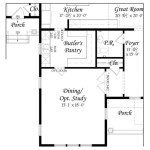What Is a Floor Plan in Building Construction Terms and Conditions?
In the realm of building construction, the floor plan is an indispensable tool, serving as a foundational document for architects, engineers, contractors, and homeowners alike. Understanding what a floor plan is, its essential elements, and its role in construction terms and conditions is crucial for the success of any building project. This article provides a comprehensive overview of floor plans, examining their purpose, components, types, and legal implications.
A floor plan is a scaled diagram of a room or building viewed from above, as if a horizontal plane were cut through the building, typically at window height. It represents the arrangement of rooms, walls, doors, windows, and other structural features. It is a two-dimensional representation of a three-dimensional space, providing a clear visualization of the layout and spatial relationships within a structure.
The primary purpose of a floor plan is to communicate the design intent to all parties involved in the construction process. It visually communicates the size and shape of rooms, their arrangement, and the location of key elements such as doors, windows, stairs, and fixtures. This visual representation ensures that everyone involved has a shared understanding of the project's scope and design. Furthermore, floor plans serve as a basis for calculating material quantities, estimating costs, and planning the sequence of construction activities. They are essential for obtaining building permits and ensuring compliance with building codes and regulations.
Essential Components of a Floor Plan
A comprehensive floor plan includes several essential components that together provide a complete and accurate representation of the building's layout. These components are critical for effective communication and coordination throughout the construction process.
Walls: Walls are depicted as solid lines, indicating their thickness and location. The type of wall (e.g., load-bearing, partition) is often indicated through different line weights or annotations. The dimensions of walls are also included, specifying their length and thickness.
Doors and Windows: Doors are represented by a curved line indicating the direction of swing and their width. Windows are shown as openings in the wall, with their dimensions and type (e.g., single-hung, double-hung, sliding) noted. The placement of doors and windows is crucial for determining circulation paths and natural light levels within the building.
Rooms: Rooms are labeled with their names (e.g., living room, bedroom, kitchen) and sometimes their area in square feet or meters. The arrangement and dimensions of rooms dictate the functionality and usability of the space.
Stairs: Stairs are represented by a series of steps, with an arrow indicating the direction of ascent. The number of steps and the rise and run of each step are typically noted. The location and design of stairs are critical for ensuring safe and convenient vertical circulation within the building.
Fixtures and Appliances: Fixtures such as toilets, sinks, bathtubs, and showers are shown in their respective locations in bathrooms. Appliances like refrigerators, stoves, dishwashers, and washing machines are also included in kitchens and laundry rooms. The placement of these fixtures and appliances must comply with plumbing and electrical codes.
Dimensions: Dimensions are indicated using extension lines and dimension lines, specifying the length and width of rooms, walls, and other features. Overall dimensions of the building are also provided. Accurate dimensions are crucial for ensuring that the building is constructed according to the design specifications.
Annotations and Notes: Annotations and notes provide additional information about the building, such as material specifications, construction details, and code requirements. These notes are essential for clarifying any ambiguities in the floor plan and ensuring that the building is constructed according to the intended design.
Scale: The floor plan is drawn to a specific scale, such as 1/4 inch = 1 foot or 1:50, indicating the relationship between the drawing and the actual size of the building. The scale allows the user to accurately measure distances and calculate areas from the floor plan.
Types of Floor Plans
Floor plans can be categorized into different types based on their purpose and level of detail. Understanding the different types of floor plans is essential for selecting the appropriate type for a specific project.
Conceptual Floor Plan: This type of floor plan is a preliminary design that shows the basic layout of the building, including the arrangement of rooms and spaces. It is used to explore different design options and to get initial feedback from clients or stakeholders.
Detailed Floor Plan: This type of floor plan provides a more detailed representation of the building, including the location of doors, windows, fixtures, and appliances. It is used for construction documentation and for obtaining building permits.
Construction Floor Plan: This type of floor plan is the most detailed type, providing all the information needed for construction, including dimensions, material specifications, and construction details. It is used by contractors and subcontractors for building the structure.
Furniture Floor Plan: This type of floor plan shows the placement of furniture and other interior elements. It is used for interior design and space planning.
As-Built Floor Plan: This type of floor plan is created after the construction is complete, showing the actual layout of the building as it was built. It is used for record-keeping and for future renovations or additions.
Floor Plans in Building Construction Terms and Conditions
Floor plans play a significant role in building construction terms and conditions. They are often incorporated into contracts between the property owner, architect, and contractor, specifying the scope of work, design standards, and expected outcomes. A clearly defined floor plan minimizes ambiguities and misunderstandings, which are crucial for avoiding disputes and ensuring project success.
Scope of Work: The floor plan defines the scope of work for the contractor. It outlines the areas to be constructed, the materials to be used, and the expected finishes. Any deviations from the floor plan must be documented and approved by all parties involved. The floor plan forms a crucial part of the overall construction documents that are referenced throughout the build.
Design Standards: The floor plan establishes the design standards for the building, including the size and shape of rooms, the location of doors and windows, and the placement of fixtures and appliances. These standards must comply with building codes and regulations, as well as the client's preferences and requirements.
Payment Schedules: Payment schedules are often tied to the completion of specific milestones defined in the floor plan. For example, a payment may be due upon completion of the foundation, framing, or interior finishes. The floor plan provides a visual reference for tracking progress and verifying that milestones have been met.
Change Orders: Any changes to the floor plan during construction must be documented in a change order, which is a written agreement between the property owner and the contractor that outlines the scope of the change, the cost, and the schedule impact. Change orders are essential for managing changes and preventing disputes.
Liability and Responsibility: The floor plan helps to define the liability and responsibility of each party involved in the construction process. The architect is responsible for creating an accurate and complete floor plan that complies with building codes and regulations. The contractor is responsible for constructing the building according to the floor plan. The property owner is responsible for approving the floor plan and ensuring that it meets their needs and expectations.
In conclusion, a thorough understanding of floor plans is essential for navigating the complexities of building construction. Their role in defining the scope of work, setting design standards, establishing payment schedules, managing change orders, and allocating liability makes them an indispensable component of construction terms and conditions. A well-prepared and communicated floor plan serves as a roadmap for a successful building project, ensuring that all parties involved are aligned and working towards a common goal.

How To Read A Floor Plan With Dimensions Houseplans Blog Com

Floor Plan Wikipedia

Floor Plan Designing Buildings

How To Read A Floor Plan With Dimensions Houseplans Blog Com

How To Properly Read Floor Plans And What Details Look For

How To Read A Basic Floor Plan Lofty Building Group

12 Examples Of Floor Plans With Dimensions

10 Types Of Floor Plan And Blueprint Symbols

How To Draw A Floor Plan Live Home 3d

Why Are Floor Plans Important When Building A House Homify
Related Posts








